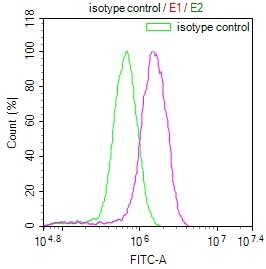The production of the NDUFS4 recombinant monoclonal antibody follows a stringent and precise procedure to ensure its quality and specificity. Initially, B cells are isolated from an immunized animal using a synthesized peptide derived from human NDUFS4 as the immunogen. Subsequently, total RNA is extracted from the isolated B cells and converted into cDNA through reverse transcription. The NDUFS4 antibody genes are then amplified using PCR with primers specific to the antibody constant regions and incorporated into an expression vector. This vector is introduced into host cells to enable the production of the NDUFS4 recombinant monoclonal antibody. The antibody is collected from the cell culture supernatant and purified using affinity chromatography, resulting in a highly purified formulation. Comprehensive characterization assays, including ELISA, IHC, and FC analysis, are conducted to verify the antibody's specificity and functionality, ensuring its precise binding to human NDUFS4 protein.





